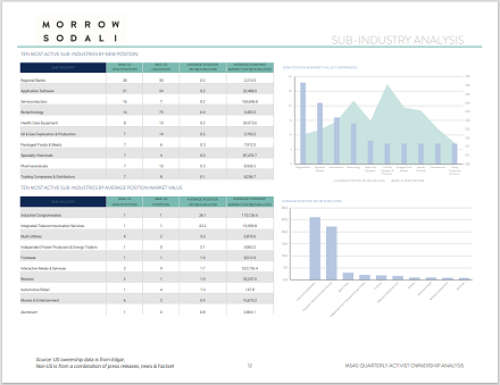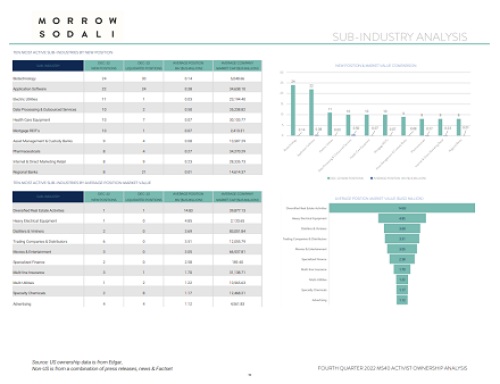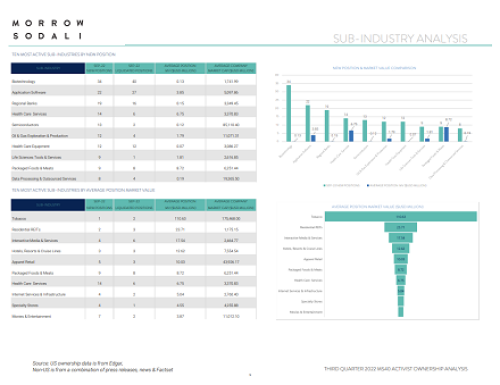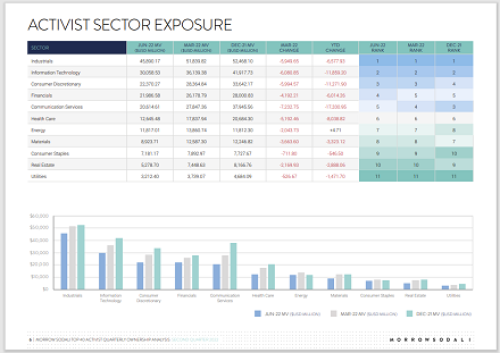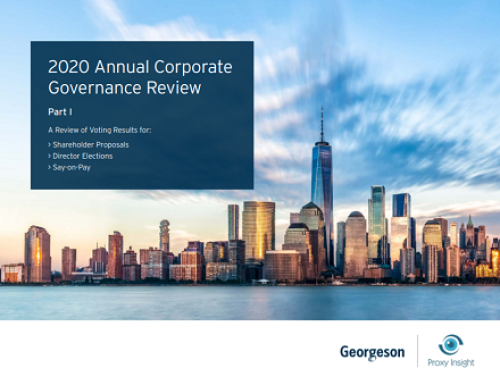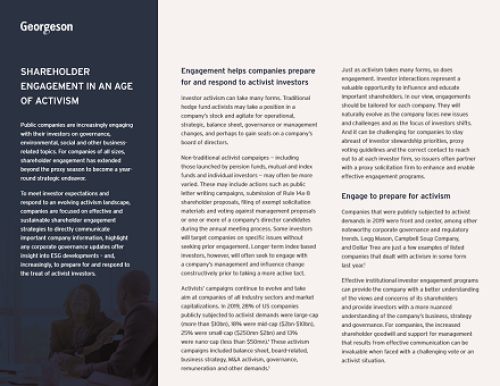Brad Allen takes a monthly look at corporate finance activity
With M&A activity posting a four-year low, fee-starved investment bankers were glad to close out a dismal 2012. The total volume of M&A transactions fell 7.9 percent to $2.22 tn in 2012 from $2.41 tn in 2011, and was 10 percent below 2008 levels, according to media reports.
But the deal crowd found reason to cheer in the New Year as nearly one third of the 2012 total came in the final quarter, the biggest single-quarter performance since Q3 2008. There was a parallel, trend-reversing fourth-quarter uptick in private equity sales of firms to strategic buyers, according to Seattle-based research firm PitchBook. The strong Q4 deal activity signaled to many that corporate strategic buyers have (finally) opened their swelling checkbooks.
If so, IR professionals may need to dust off their M&A playbooks and lace up their game shoes after four years on the bench. ‘Given the mountains of cash on balance sheets and the inability to grow organically, there is a pent-up [appetite] for companies to grow through acquisitions,’ observes Brad Wilks, managing director at Sard Verbinnen’s Chicago office.
Wilks advises IROs to assess which side of a deal their company may find itself on. ‘If you’ve stumbled and your valuation reflects that, and you’re in an industry ripe for [consolidation], you would be remiss in not raising it with your senior leadership,’ he says.
He also cautions IROs at cash-rich and acquisition-hungry firms against complacency. If management has been open about its acquisition appetite, IROs ‘should be testing that hypothesis with your investor base,’ he suggests. The response ‘could be a mixed bag. A lot of investors would just as soon have the cash.’ It may also make for some tough conversations with top management if the IRO reflects investor resistance to a potential acquisition unless management can ‘make a compelling case that it’s accretive from day one.’
Marian Briggs, senior vice president in the IR practice at Padilla Spear Beardsley, a Minneapolis-based communications agency, sees industry-specific dynamics driving much of the deal activity, which she expects to escalate in 2013. ‘The emergence of healthcare reform is driving M&A across the spectrum of players – device manufacturers and pharmaceutical companies, providers and payers,’ she states in an email. ‘And we have seen some activity in the technology and retail spaces as well.’
Briggs also warns that shareholder activism ‘is back in the picture’, requiring IROs to ‘be continually aware of their company’s vulnerabilities. Make sure you are talking regularly with your existing large holders and that they understand your strategy… Listen carefully if your holders have governance issues.’
Briggs acknowledges the stress a recharged deal environment can bring, but also notes the potential benefits. ‘There aren’t a lot of good IR jobs out there, and the prospect of losing yours to a transaction is not altogether pleasant,’ she says. ‘But that’s the reality, and all good IROs know this. On the flip side, if your company is a likely acquirer, you have an opportunity to revise your investment thesis and refresh your story to the Street – a nice professional experience!’
Bradley Smith, director of marketing at PR Newswire and its SEC transactions filings division Vintage Filings, reminds IROs at US firms that the new Dodd-Frank regulations add additional complexity: a separate say-on-pay advisory vote on any golden parachute arrangements that are part of the transaction.
According to Bloomberg News, the Americas accounted for $1.37 tn in M&A deals in 2012, compared with $891.7 bn in Europe, and $531.6 bn in Asia-Pacific ex-Japan, which on a stand-alone basis accounted for $207.1 bn, followed by the Middle East and Africa with $85.4 bn.


